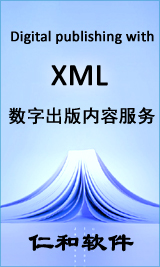Xiaowu HU
,
Fanrong AI
,
Hong YAN
金属学报(英文版)
This paper investigated the influences of pouring temperature and cooling rate on the microstructure development and mechanical properties for casting Al-Si-Cu aluminum alloy. The microstructure of the as-cast samples was characterized by an optical microscope. The results showed that the dendrite arm spacing (DAS, λ) is well refined by pouring at a higher temperature. The λ decreases with increasing pouring temperature due to the multiplication of the nucleation sites in the superheating liquid melt, and the mechanical properties, such as microhardness and ultimate tensile strength increase correspondingly, while the elongation decreases. The relationships between microhardness and λ for the samples cooled in metal mould and sand mould, are given as HV=118.9 - 1.246 λ and HV=115.2 - 1.029 λ, respectively. The effects of the cooling rate controlled by using permanent mould casting and sand mould casing processes (the cooling medium is air and sand, respectively) on the dendrite arm spacing and mechanical properties are similar to the effect of the pouring temperature.
关键词:
Pouring temperature
,
null
,
null
,
null
,
null
Weimin MAO
材料科学技术(英文)
The effects of pouring temperature, short electromagnetic stirring with low strength and then soaking treatment on the microstructure of AlSi7Mg alloy were investigated. The results show that if AlSi7Mg alloy is poured at 630 or 650℃ and meanwhile stirred by an electromagnetic field at a low power for a short time, the pouring process can be easily controlled and most solidified primary α-Al grains become spherical and only a few of them are rosette-like. Weak electromagnetic stirring makes the temperature field more homogeneous and makes the primary α-Al grains disperse in a larger region, which leads to the spherical microstructures of primary α-Al grains. When the AlSi7Mg alloy is soaked or reheated at the semisolid state, the primary α-Al grains ripen further and they become more spherical, which is favorable to the semi-solid forming of AlSi7Mg alloy.
关键词:
AlSi7Mg alloy
,
alloy
,
semi-solid
,
pouring
,
tempera
null
,
null
,
null
,
null
金属学报(英文版)
The semi-solid AlSi7Mg alloy slurry of large size was prepared by the low superheat pouring and weak electromagnetic stirring in this paper. The effects of pouring temperature and stirring power on the microstructure of the AlSi7Mg alloy slurry were studied. The results show that the semi-solid AlSi7Mg alloy slurry of 127mm in diameter can be prepared by the low superheat pouring and weak electromagnetic stirring technology and this new technology can save energy and make the pouring process convenient. When the liquid AlSi7Mg alloy is poured at 650 or 630, the solidified microstructure of the AlSi7Mg alloy slurry prepared by the weak electromagnetic stirring is remarkably improved compared with that of the slurry without stirring, the primary -Al grains appear rosette-like or spherical. When the pouring temperature is decreased, the shape of the primary -Al grains is gradually changed from dendritic-like grains to spherical grains. When the pouring temperature is appropriately increased, namely raised to a certain superheat, the pouring process becomes easier and an ideal spherical microstructure of the AlSi7Mg alloy slurry prepared by the weak electromagnetic stirring can also be obtained, in this experiment, when the stirring power is 0.36kW, the optimized pouring temperature parameter is 630.When the AlSi7Mg alloy slurry is prepared by the low superheat pouring and weak electromagnetic stirring, when the pouring temperature is 630,increasing the stirring power appropriately could gain better spherical primary -Al grains,but if the stirring power is increased to a certain value, the shape of the primary 冄-Al grains is not further improved, in this experiment, the optimized stirring power parameter is 0.36kW.
关键词:
Semi-solid
,
null
,
null
,
null
,
null






